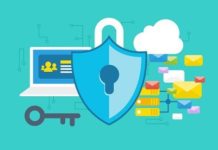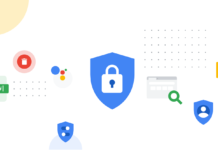What is Cybersecurity
Cybersecurity is a procedure of protecting servers, mobile devices, electronic systems and information from malicious attacks. Cybersecurity is also known as electronic information security, information technology, etc. Cybersecurity is distributed into various categories; they are as follows;
Need of CyberSecurity
- Cybersecurity is essential due to the government, corporate, medical, companies gather and save large amounts of data on systems, mobiles, etc.
- An important part of that data is private information, and accessing this data without any authorization will lead to adverse results.
- As the amount of cyberattacks grow, organizations and companies particularly those who work with sensitive information like Health, Financial Industry, etc.
Advantages of Cybersecurity
- Cybersecurity can protect Business from Ransomware, Malware, phishing, etc.
- It can protect networks and data.
- Due to Cybersecurity, unauthorized users cannot access data.
- It will reduce response time after the leakage.
Challenges of Cybersecurity
- Network Security: It is the process of protecting computer networks from attackers or intruders.
- Application Security: The main objective of application security is to preserve the devices and software from threats.
- Information Security: It preserves the privacy and integrity of data.
- Operational Security: It contains practices and choices for protecting and managing data assets. It also includes approvals required for using a network.
- Training Consumer: It deals with the best uncertain cybersecurity element. Anyone can unintentionally initiate Malware by failing to obey good security procedures. Training consumers to remove distrustful emails and files.
Types of Cyber Attacks
The risks intimidated by Cybersecurity are three-types:
- Cybercrime: It comprises individuals or communities focused systems for economic gain or to induce interruption.
- Cyberattack: It usually contains politically inspired information collection.
- Cyberterrorism: It is designed to weaken electronic systems to induce fear or panic.
The following methods are used to endanger Cybersecurity:
#1 Malware
Malware is the most general cyber threat. It is defined as a software that is created by the attacker or hacker to generate disturbance or harm the consumer’s system. The Malware will enter into the system through unwanted email attachments or legal software downloads.
Most common types of Malware:
- Virus: A self-duplicated software that adds itself to clean file and stretches across the system and damages the file with the help of malevolent code.
- Trojans: It is a malware concealed as legal software. Cybercriminals deceive consumers into downloading trojans onto their system to induce damage or gather data.
#2 SQL Injection
It is a kind of cyber attack applied to grab control of and rob the data from the database. Cybercriminals utilize weakness in data-based software to inject malicious code into the database through malevolent SQL queries.
#3 Phishing
In this attack, the attacker steals some important information through emails. This attack is generally used for acquiring credit card information and other private information.
#4 Denial-of-service attack
In this attack, cybercriminals stop the target system from satisfying legal requests by increasing the traffic of the server and network.
Recent Cyber Threats
- Dridex Malware: Dridex is an economic trojan with a scope of abilities, and it is damaging the consumers since 2014. With the help of present malware or phishing emails, it attacks the target systems. It can rob passwords, private data and bank account details to use them in fake transactions.
- Emotet Malware: Emotet is a complex trojan that can rob the data and also carry other malicious software. Emotet targets weak passwords which remind us about the importance of generating a safe password.
- Consumer Protection: It is an important feature of Cybersecurity. At the end of the day, consumers will make the attacker enter the system. To protect the end-user system, Cybersecurity takes the help of cryptography rules and concepts. Additionally, the end-user will have software or an application to detect the virus or Malware present in his system.
Tips or Measures for safeguarding yourself from CyberSecurity Attacks
- Upgrade your operating system and application – By upgrading your software and operating system, you can gain from the recent security patches.
- Employ Strong Passwords – Assure your passwords are not effortlessly guessable.
- Employ Anti-virus Software – Consumers should maintain proper anti-virus software to detect the anti-virus and protect their systems from malicious attacks.
- Don’t open unwanted email attachments – Consumers should be cautious while opening the emails sent by the unknown senders.
- Stop using WIFI networks located in public areas – Using insecure networks may expose you to man-in-the-middle attacks.
Career in Cybersecurity
As the cybersecurity scenery is growing, individuals who have knowledge of hardware and software skills are required. So, anyone who wants to start their career in the Cybersecurity domain has a good future.
Conclusion
In today’s digital world, internet utilization is increasing day-by-day, and this utilization leads to several crimes. As the internet became part of our life, we cannot avoid it, so we have to take measures to secure ourselves from cyberattacks. Cybersecurity tells us how attackers can attack us and what are the preventive measures to be taken for defending the cyber attacks.








